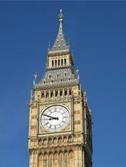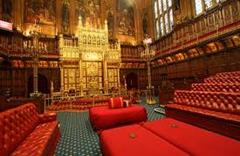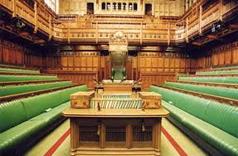
Главная страница Случайная страница
КАТЕГОРИИ:
АвтомобилиАстрономияБиологияГеографияДом и садДругие языкиДругоеИнформатикаИсторияКультураЛитератураЛогикаМатематикаМедицинаМеталлургияМеханикаОбразованиеОхрана трудаПедагогикаПолитикаПравоПсихологияРелигияРиторикаСоциологияСпортСтроительствоТехнологияТуризмФизикаФилософияФинансыХимияЧерчениеЭкологияЭкономикаЭлектроника
Find or draw pictures of the Tower. Make a collage from your pictures.
|
|
Unit 11 westminster.
The houses of parliament.



The Houses of Parliament from above “Big Ben” Westminster bridge
· What is the name of the political centre of London?
· What is the official name of the Houses of Parliament?
· What architectural style was the building built in?
· How often does the sovereign visit the House of Commons?
· What is Guy Fawkes known for?
· What is Big Ben?
· What is the traditional seat of the Lord Chancellor?
Westminster is the royal and political heart of London where the Houses of Parliament are situated. It is a very large building, which stands on the left bank of the Thames and is 948 feet (316m) in length. The Houses of Parliament has over 1000 rooms, and over 3 km of corridors, laid out they stretch from the Parliament
to St. Paul’s Cathedral.
The Houses of Parliament with its structure are a remarkable example of Gothic architecture. Royal Palaces and houses were built along the banks of the Thames in medieval days. The Houses of Parliament, called officially the Palace of Westminster, were formerly a palace for kings and queens. Later the palace was used both as a royal residence and also as a parliament house until the 16th century.
The Houses of Parliament serve as the meeting place of two legislative bodies, the House of Commons and the House of Lords.
Famous events in the history of the Houses of Parliament include the Gunpowder Plot and Charles I in the House of Commons.
At midnight on November 4th, 1605, Guy Fawkes was discovered in the cellarbeneath the House of Lords, about to set fire to a pile of gunpowderbarrels. Every autumn his capture is still celebrated. There are organized bonfires and firework displays around London.
In 1642 Charles I went to the House of Commons to arrest five Members of the Parliament (MPs), who criticized his rule. They foiled him by escaping. Since then, the sovereign has never been allowed into the Commons.
Parliament is reopened in November after a summer break with a ceremony called the State Opening, when the monarch makes a speech from the throne in the Lords Chamber. An official called “Black Rod” is sent to the Commons to summon MPs to hear the speech.
Two towers decorate the buildings of the Parliament. In the Victoria Tower millions of parliamentary documents are kept. A Union flag is flying when Parliament is sitting during daylight hours.
For many people the most distinctive feature of the Houses of Parliament is the Clock Tower, originally Saint Stephen’s Tower, or Big Ben as it is usually called. Properly speaking, the name derives from the great bell in the clock of the tower. The clock is one of the finest in the world. It is called “the voice of London” and it has been telling time to the second since 1859. In 2012 the tower was renamed in the Elizabeth Tower.
The construction of the 96m high Clock Tower began in the year Queen Victoria came to the throne, 1837. The architect and clock maker both died before the 13.5 ton bell was mounted behind the four clock faces, which each measures 7m in diameter. The minute hands are 4.3m long, the hour hands are 2.7m long.
The Great Bell has four Little Bens round it. Big Ben strikes only once an hour, but the other four bells tell the quarters and the half hours. At the side of Big Ben there is a huge hammer weighing over 440 pounds (8 tons). People are allowed to get inside the Tower if they wish to see the work of the clock. For this one has to go up 374 steps to reach the top. When Parliament is sitting at night light is shining above the clock.
Why Big Ben? The clock was named after Sir Benjamin Hall under whose direction it was made. Sir Benjamin Hall was a very tall and stout man, whose nickname was “Big Ben”. One day he said in Parliament, “Shall we call the bell St. Stephen’s? St. Stephen’s is the name of the Tower”. But someone joked, ”Why not call it Big Ben? ”, now the bell is known all over the world by that name.



The House of Lords The State Opening The House of Commons
The House of Lords is a chamber in rich tones of red and gold and is the meeting place of the Lords Spiritual and the Lords Temporal. At the south end of the chamber there is the Throne, in front of which there is the Woolsack, where the Lord Chancellor, who is also the Speaker, has a seat. The Woolsack is a cushion stuffed with wool from England, Wales, Scotland, Northern Ireland and the countries of the Commonwealth to symbolize what was once England’s chief source of wealth.
The House of Commons is decorated in a simple style with tiers of green seats. The Government sits on one side of the room with the Opposition on the other. There are red stripes on the floor in front of each side with the distance between two drawn swords. No MP may cross it when addressing the House.
Vocabulary
The House of Commons [´ haus ov ´ kɔ mə nz] Палата Громад
The House of Lords [´ haus ov lɔ: dz] Палата Лордів
Gothic [´ gɔ θ ɪ k] готичний
Gunpowder Plot [´ gʌ npaudə ´ plɔ t] Порохова змова
Guy Fawkes [´ gaɪ ´ fɔ: ks] Гай Фокс
MP [´ em´ pɪ: ] член парламенту
The State Opening [´ steɪ t´ ɔ upə nɪ ŋ ] офіційне відкриття сесії
парламента після канікул
“Black Rod” [´ blæ k ´ rɔ d] Чорний жезл
The Woolsack [´ wulsæ k] мішок з вовною
The Lord Chancellor [´ lɔ: d´ tʃ ɑ: nsə lə ] лорд-канцлер
legislative body [´ ledʒ ɪ slə ɪ tɪ v´ bɔ dɪ ] законодавчий орган
to foil [´ fɔ ɪ l] запобігати, стримувати
to derive [´ dɪ raɪ v] походити
hammer [´ hæ mə ] молот
sword [´ sɔ: d] меч